
The Torres Strait islands are an archipelago of more than 274 islands lying in the narrow passage of water that separates Queensland’s Cape York Peninsula and New Guinea. The sound, colour and movement of their biennial festival vividly illustrates the renaissance of an ancient culture. Named after Zenadth Kes – the Islander name for Torres Strait – the event has been going from strength to strength for 32 years. Its dance teams are well-oiled machines, performing local stories of mythology, astronomy, totems and the four winds of Zenadth in perfect unison to the resonating thump of the long, wooden warup drum. The air is filled with the haunting wail of singers belting out ancient songs in language. (Two Indigenous languages are spoken on Torres Strait islands – Kala Lagaw Ya and Meriam Mir. There are also six dialects of Creole, which blends English with the local language.) The dancing starts early in the morning and goes until late at night.
One of the architects of the festival, the late Ephraim Bani (chief of the Wagadagam clan and a renowned cultural adviser and linguist ), once said: “The past must exist, for the present to create the future.” The phrase is engraved on a boulevard on the waterfront at Thursday Island (TI), one of Torres Strait’s main islands.
Fanning the flames
Denne historien er fra September - October 2019-utgaven av Australian Geographic Magazine.
Start din 7-dagers gratis prøveperiode på Magzter GOLD for å få tilgang til tusenvis av utvalgte premiumhistorier og 9000+ magasiner og aviser.
Allerede abonnent ? Logg på
Denne historien er fra September - October 2019-utgaven av Australian Geographic Magazine.
Start din 7-dagers gratis prøveperiode på Magzter GOLD for å få tilgang til tusenvis av utvalgte premiumhistorier og 9000+ magasiner og aviser.
Allerede abonnent? Logg på

SULAWESI SENSATIONS
There are worlds within worlds and marvels untold waiting to be experienced on Indonesia's remote islands.
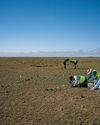
SEARCHING FOR AUSSIE DINOSAURS
Our understanding of where to find ancient life in Australia has been turned on its head by a new appreciation of the country's geology. Now the world is looking to our vast outback as the latest hotspot to locate fossils.
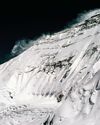
THE HARDEST NIGHT
The first Australian ascent of Mt Everest in 1984 is one of the great feats of mountaineering. Climbed by a small team semi-alpine style, with no bottled oxygen, via the Great (Norton) Couloir, it remains unrepeated 40 years later.
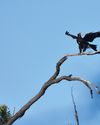
WEDGE-TAILED WONDER
The chance discovery of an eagle nest leads to an extended vigil observing normally hidden behaviours of one of nature's supreme winged marvels.
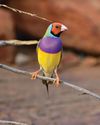
BURDENED BY BEAUTY
Northern Australia's Gouldian finch survives in huge numbers in cages around the world, but its wild population continues to struggle.
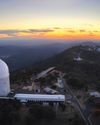
A TELESCOPE FOR A GOLDEN AGE
After a stellar 50 years as one of the country's major scientific assets, the AAT continues to play a major role in keeping Australian astronomy on the world stage.
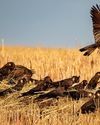
COCKY WHISPERING AT COOMALLO CREEK
This patch of remnant bush on the edge of the West Australian wheatbelt is a place loved by one of Australia's rarest bird species and the man who has studied the site for more than 50 years.

A PIONEERING PAIR
Louisa Atkinson and her mother, Charlotte, were among Australia's earliest authors, and pioneers in women's rights.

THE LONGEST WALK
Lucy Barnard is walking from Argentina to Alaska -the length of the Americas - on an extraordinary journey of endurance and adventure.
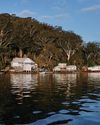
SECLUDED, BUT NOT ALONE
In an era of heightened social isolation, where many of us lead lonely lives, Dangar Island offers the chance to be part of a supportive, connected community.